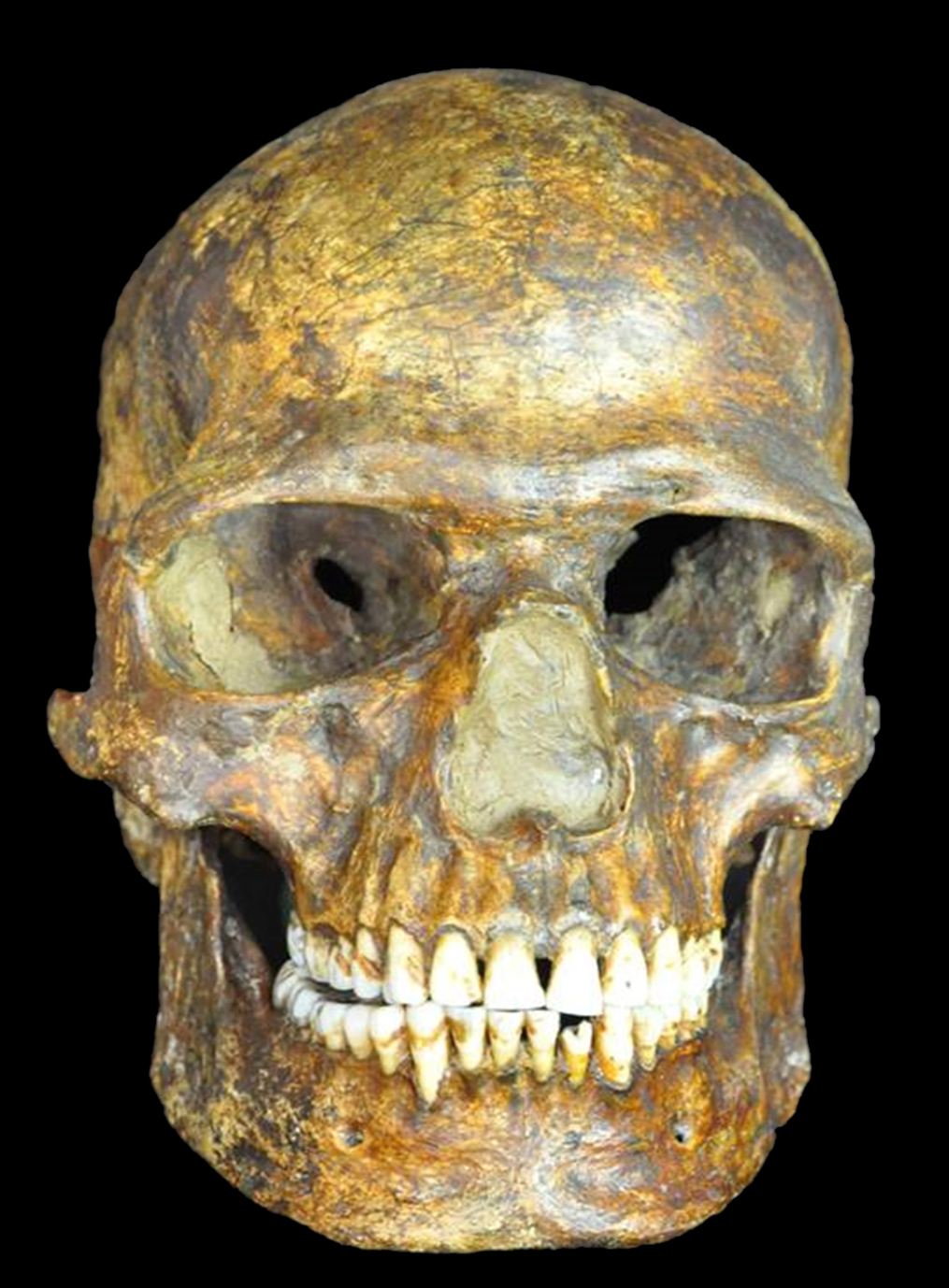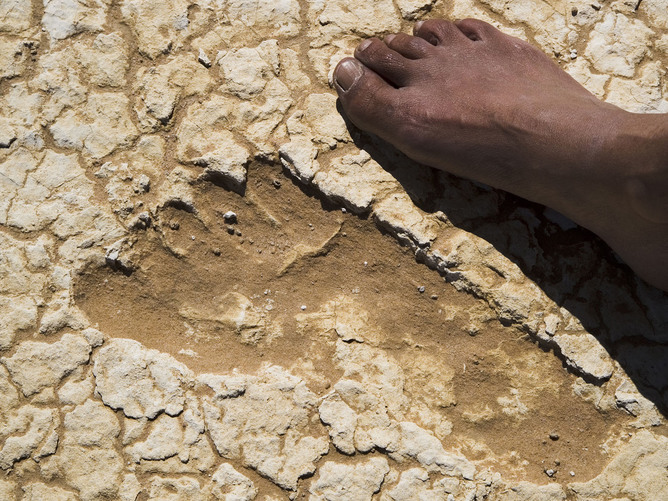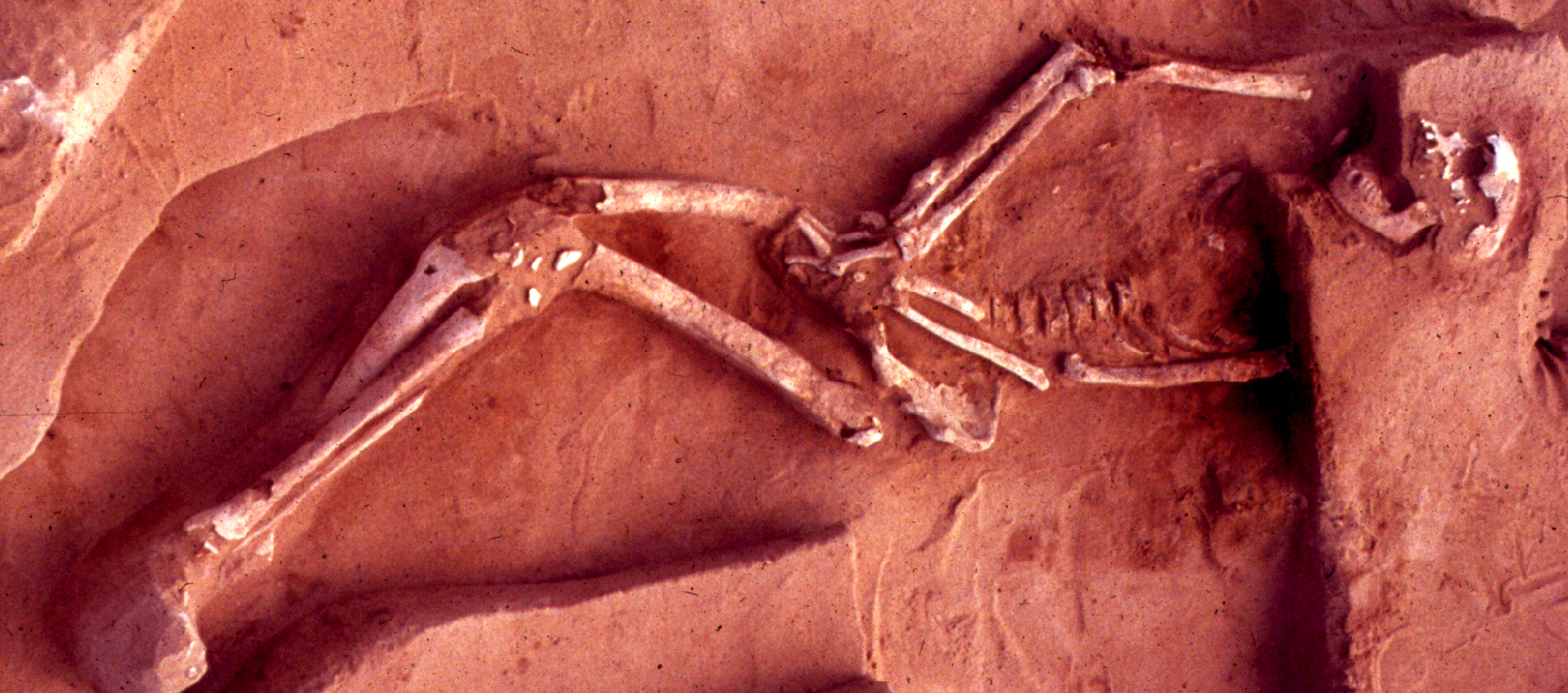When people abandoned a hunter-gatherer lifestyle and became agriculturalists, initially some 10,000 years ago, they gave up a lot of things.
This significant shift in the way they obtained their food was probably not something they elected to do. Instead, population pressure and diminishing resources forced people into developing new intensified forms of subsistence. This meant people became more sedentary.
Not only did these new arrangements result in the emergence of new social structures and new technological innovations, but it also had some very negative outcomes.
As people intensified their subsistence strategies and became sedentary there was an increase in population size.
New diseases evolved through the closer association with animals and coupled with large population sizes this enabled the emergence of epidemic scale disease patterns. This list probably included diseases such as measles, influenza, whooping cough, smallpox and tuberculosis.
A lot happened when humanity turned to agriculture.
The genome tells the story
We were involved in a study, published recently, which looked at specific parts of modern genomes of people from around the globe. It also appears that there were significant changes in population structure as well, and not just population size.
The study focused on the Y chromosome that is only inherited through the paternal line from fathers to sons. This tells us about origins and migrations of males in the population, but it can also reveal patterns in population changes.
These results were compared to those from the mitochondrial DNA, that is the DNA inherited through the maternal line in humans.
This provided a very different picture of the regional male and female effective population size. In general terms, the effective population size is the number of individuals in a population who contribute offspring to the next generation.
So the study suggests that there was a global collapse in genetic diversity of the males in contrast to that of females. Essentially this means there was an extreme reduction in the number of males who reproduced, but not a reduction in the number of females.
This appears to correlate with the timing of this major shift in subsistence, referred to by archaeologists as the Neolithic.
In fact, Y chromosome genetic data suggests this reduction at around 8,000 to 4,000 years ago. Essentially there was a genetic bottleneck in male genetic diversity at that time which cannot be easily explained through natural selection.
So what happened?
Could the development of agriculture and a shift in social patterns explain this change?
If male reproductive success was being controlled by a smaller number of males of high social order, for example a smaller ruling elite, then we would see a situation where male population (genetic) diversity was reduced.
An example of such an event from much later times is Genghis Khan. He was reputed to have sired hundreds of children, resulting in millions of Asian men today who bear a very similar Y chromosome lineage. Identifying such social changes within the archaeological record, however, is easier said than done.
The Neolithic introduced a new system of economic production and increased social stratification. The rise of a social elite and followers and the development of hierarchies in a society, independently emerged in several global regions, and later spread across much of the world.
The studied 110 populations were grouped according to seven global regions and the decrease of male genetic diversity emerges in all of them (with the exception of Siberia).
It is important to note that the Neolithic took many different forms as it spread across the globe. It was not a prehistoric corporate global takeover, but it did set humanity on a course that it could not turn back from.

Unravelling the history
Archaeology can be very effective for reconstructing past social change in societies, ranging from the study of artefacts which may reveal new innovations to the changing frequencies in trauma and disease patterns in skeletons.
It can reveal the development of new forms of structures, such as fortifications, irrigation systems and enlarged settlements. It can also show the impact of people on their environments such as domestication of plants and animals, and the deforestation and increased salinisation of landscapes.
But competition through male-driven conquest represents a signature that archaeologists would find exceedingly difficult to identify from the material archaeological record alone.
Studies looking at ancient genomes are starting to detect patterns in population change that would otherwise remain hidden if we relied solely on standard archaeological investigations.
Research into genetic changes in populations therefore can serve as a catalyst for archaeologists to revisit the material record with such hypotheses in mind.
The opportunity now exists to test the global hypothesis proposed by this study from modern and ancient genomes. By working much more closely with archaeologists and palaeo-environmental scientists we can reconstruct the social and environmental contexts that may have driven changes in ancient populations.
The techniques now exist to build far more sophisticated models for understanding the global past of humanity through targeting specific geographic regions. It will be of great interest to develop a clearer understanding of past societies that did not endure the many hardships of agriculture. Aboriginal Australia is one such place.
Modern and ancient genomics is playing the key role in generating this revision of our shared past. Approaches that identify culturally driven sex-specific changes in our ancient human history provide yet another insight into the impact of the world changing Neolithic revolution.
Originally published: Genome Research
AUTHORS
 Michael Westaway
Michael Westaway
Senior Research Fellow, Environmental Futures Research Institute at Griffith University
 David Lambert
David Lambert
Dean Research Griffith Sciences and Professor of Evolutionary Biology at Griffith University
 Monika Karmin
Monika Karmin
Researcher in Evolutionary Biology
This article was originally published on ![]()







Underlying your article, and the original piece on which it is based, it seems to me is the idea that the boys did it: invented agriculture, invented metallurgy, threw the first pots. Which assumptions could be called into question by asking the simple questions: who was doing the gathering? and who was hanging around the fire all day? Agriculture is an outcome of gathering. It is not a result of chasing a kanga for dinner. And I would suggest metallurgy, copper, then bronze, is an outcome of hanging around the campfire. I recently helped a man who had his home destroyed by grass fires in western Victoria on 17 March, and had an aluminium clad caravan burnt to the steel undercarriage. The cladding was not only burnt, but the aluminium melted out of the burnt material (they use powdered aluminium in solid rocket fuel to burn as part of the fuel). The shape of the molten material tended to form in such a way as that it could have been ground on a nearby stone to produce an axe with an edge. Btw, the grass fire was hot enough to melt glass. I am not sure what would happen with copper ore cooked in the camp oven, but if it melted and formed the flat teardrops like the aluminium, then we have a simple explanation for the invention of the copper, and bronze ages. In other words, women noticed the consequences of their fires, and used them. So as a result women accumulated greater resources, and that gave them the power to choose their mates, and that gave a selective advantage to the blokes who pitched in around the house, hoed a few rows before and after dinner over those who just liked to pitch into battle.